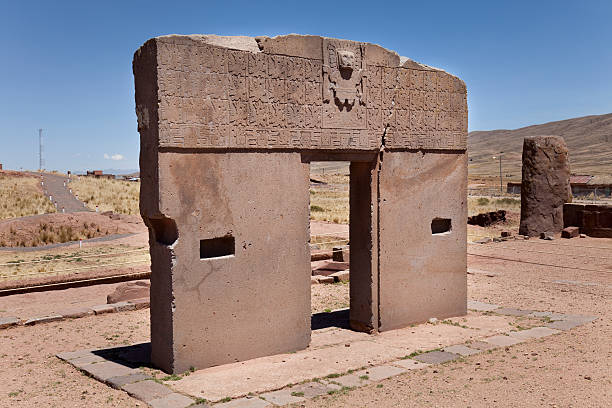South America is renowned for its awe-inspiring archaeological sites and historical wonders, from the majestic ruins of Machu Picchu to the enigmatic remnants of the Tiwanaku civilization. Nestled high in the Andes near Lake Titicaca, Tiwanaku offers a glimpse into a pre-Hispanic empire that once thrived across parts of modern-day Bolivia, Peru, and Chile. Among its many remarkable features, the Gate of the Sun stands out as a profound enigma, captivating scholars and enthusiasts with its ancient artistry and potential significance.
The Tiwanaku Civilization: A Brief Overview

The Tiwanaku culture emerged around 300 A.D. and flourished until approximately 1150 A.D., reaching its zenith between 500 and 900 A.D. This civilization began as a modest settlement but evolved into a sophisticated city characterized by impressive architectural and engineering achievements. Situated at an elevation of about 12,500 feet, Tiwanaku’s location near Lake Titicaca underscores its historical and cultural significance.
Archaeological findings reveal that Tiwanaku was home to complex structures and advanced infrastructure, including an underground drainage system. The city featured a variety of temples and buildings, each reflecting the culture’s religious and societal priorities. Among these structures, the Pyramid of Akapana and the Kalasasaya temple are particularly noteworthy.
The Kalasasaya Temple and the Gate of the Sun

The Kalasasaya temple, a spacious open area likely used for astronomical observations, is notable for its seven-step eastern entrance and its surrounding stone monoliths. Dominating this site is the Gate of the Sun, one of Tiwanaku’s most significant and enigmatic relics.
Carved from a single block of andesite stone, the Gate of the Sun measures approximately nine feet in height and twelve-and-a-half feet in width. The gate’s opening is about 4.6 feet wide. Its most striking feature is the bas-relief of a deity positioned above the gate opening. This deity is adorned with what appears to be rays or an elaborate headdress and is depicted holding a staff in each hand.
Theories and Interpretations

The Gate of the Sun has inspired a variety of interpretations and theories regarding its purpose and meaning. Some scholars believe the deity represented is the Sun God, while others refer to it as the “Weeping God” due to the tear-like marks on its face. Another theory suggests the figure is a precursor to the Inca deity Viracocha, who, according to Andean mythology, emerged from Lake Titicaca to bring light to the world and create mankind.
The gate also features 48 additional figures that resemble birds and humans, often referred to as “God Messengers.” These figures, alongside the central deity, contribute to the gate’s mystique and numerous interpretations.
One prevalent theory posits that the Gate of the Sun functioned as an agricultural calendar, reflecting a solar year different from the modern one. Proponents of this theory suggest the calendar year it represents was 290 days long, divided into 12 months of 24 days each, plus an additional 2 days.
The Age and Legacy of the Gate

The exact age of the Gate of the Sun remains a topic of debate. Some researchers suggest it could be as old as 14,000 years, while others argue that the presence of unfinished figures indicates a more recent date. Regardless of its precise age, the Gate of the Sun is a crucial artifact of the Tiwanaku culture and serves as a testament to the advanced skills and artistry of its creators.
Tiwanaku’s political dominance waned in the 11th century, and by the early 12th century, the city had declined. Despite this, the site retains a high degree of authenticity and continues to captivate scholars and visitors alike. The Gate of the Sun remains a powerful symbol of Tiwanaku’s sophisticated civilization and its enduring mysteries.
Conclusion
The Gate of the Sun stands as a monumental testament to the ingenuity and cultural richness of the Tiwanaku civilization. Its intricate carvings and enigmatic purpose reflect the advanced knowledge and artistry of its creators. While many questions about the gate and the broader Tiwanaku culture remain unanswered, it undeniably holds a place of significance in the study of ancient South American history. As we continue to explore and understand these ancient wonders, the Gate of the Sun will undoubtedly remain a focal point of fascination and scholarly inquiry.
